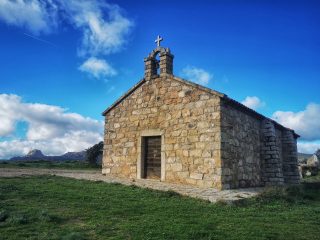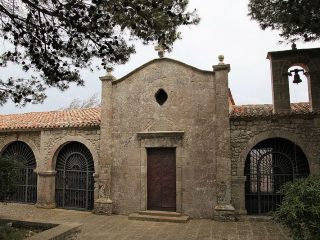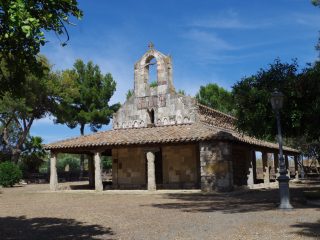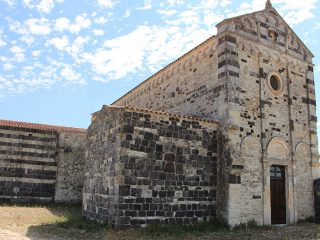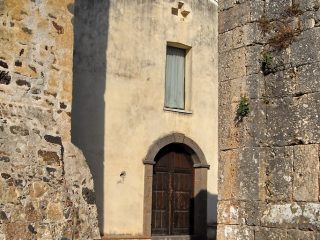La Basilica di Sant’Antioco of Bisarcio stands in a prominent position on high ground on the outskirts of Ozieri. It is one of the best examples of Pisan Romanesque style in Sardinia.
The ancient church is one of the most evocative on the island thanks to its unique architecture and lavish decorations.
Its imposing sizes date back to its time as the Cathedral of the Dioceses of Bisarcio, documented from 1065 to 1503.
The complex included the church, the only one remaining intact, the bishop’s residence and the rectory, the remains of which are still visible. Produced entirely in local stone, the church was built in three different stages. The first cathedral was built in the second half of the XI century and destroyed in a fire.
In the XII century, the church was re-built by a workforce from the Pisa school operating in Sardinia with a layout consisting of three naves and apse to the East.
At the start of the XIII century, the two-storey portico was erected resting on the facade, inside which was a staircase leading to the upper rooms. Here we find the bishop’s private rooms, most importantly, the chapter house and small chapel.
The main part of the church is split internally into three aisles separated from one another by two rows of columns that support six arches per side. The central aisle is vaulted with wooden beams, while the side aisles are cross vaults. The light is guaranteed by six monophors per side plus one at the bottom of the apse.
The facade appears asymmetrical following the collapse of the upper left part in the XV century. It was then re-built in smooth masonry and without the original decoration.
The church has various well-known depictions like “footprints of pilgrims”. They are shoe reproductions which, in Medieval times, the pilgrims carved in certain churches on the island as proof of their passage.
The church is reached along the old highway, SS597 as far as the fork half way along the road between the crossroads for Mesu ‘e Rios and Chilivani. Following the roads signs for the church and Martis, you come to the site a little after a 1 km.







